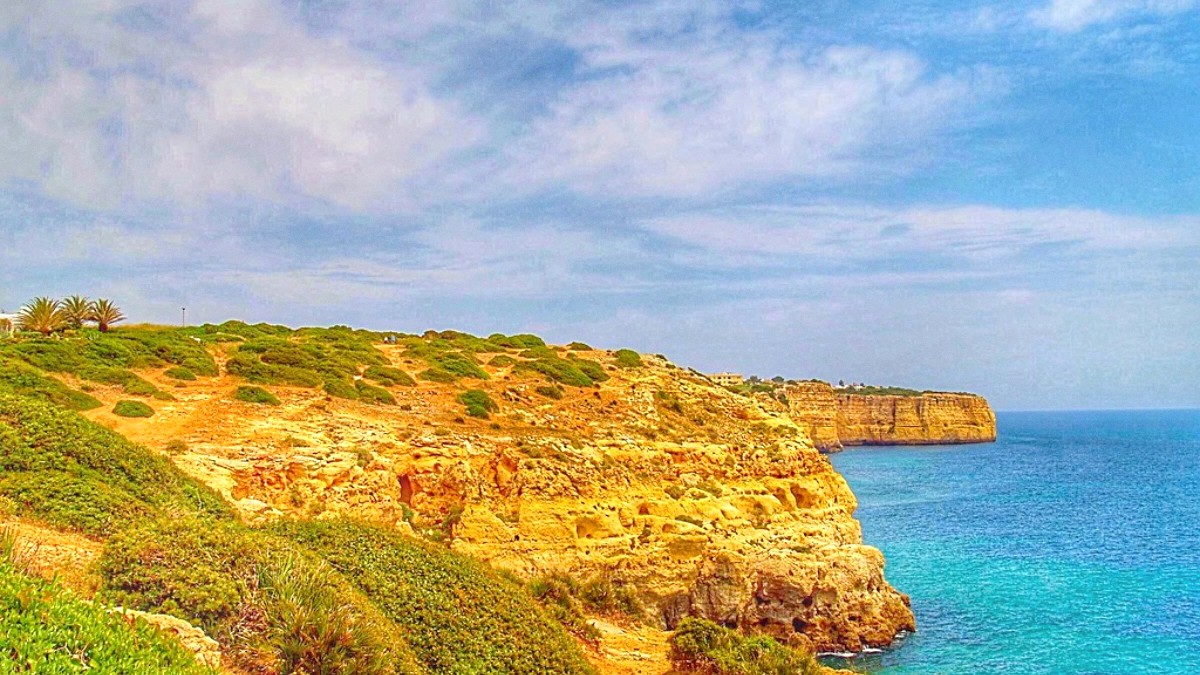
Portugal
Carvoeiro invites travelers seeking a mix of relaxation, adventure, and local culture. Unlike some of the Algarve's larger, more developed resorts, Carvoeiro keeps a welcoming, village-like feel, even as it provides modern amenities. It serves as a perfect base for exploring the region's famous beaches, dramatic rock formations, and historic towns. From its picturesque main beach to the expansive coastal trails, Carvoeiro promises a memorable escape. This guide helps plan your trip, ensuring you discover the magic of this remarkable destination. Prepare to be captivated by its beauty and relaxed pace.
Carvoeiro began as a quiet fishing village, its history deeply tied to the sea. Its name, some historians suggest, comes from "Cabroeiro," an old Arabic word meaning a fishing village or a place where fishermen resided. This etymology highlights its centuries-long connection to maritime activities.
The small fort, Forte de Nossa Senhora da Encarnação, located next to the church on the cliff overlooking Carvoeiro beach, serves as a physical reminder of turbulent times. Originally built in the 17th century, its purpose was to protect the village and its fishing fleet from invaders.
Carvoeiro is a coastal town in the central Algarve, Portugal. Its location has easy access to some of the region's most iconic natural attractions. The town is famous for its dramatic golden limestone cliffs, featuring natural arches, grottoes, and sea caves. Beautiful, sandy beaches and sheltered coves dot the coastline, including the main Praia do Carvoeiro. The town itself is built into a hillside, providing many properties with stunning ocean views.
A Mediterranean climate prevails, meaning hot, dry summers (June-August) with temperatures often reaching 30°C (86°F) or higher. Winters (December-February) are mild and wetter, with temperatures around 14-17°C (57-63°F). Spring and autumn are pleasant, providing a good balance of warmth and fewer crowds.
The town's central, picturesque beach.
Unique rock formations and grottoes accessible by a boardwalk.
A scenic wooden path along the cliffs providing panoramic views.
A world-famous sea cave with a natural skylight, accessible by boat, kayak, or stand-up paddleboard.
A stunning coastal hiking path that connects several beaches and viewpoints.
Carvoeiro presents varied activities for visitors. Beach relaxation, sunbathing, and swimming on beautiful beaches are popular. Boat tours explore sea caves and the dramatic coastline. Kayaking and Stand-Up Paddleboarding (SUP) allow for up-close experiences with grottoes. Hiking scenic cliff-top trails and golfing at nearby courses are also well-liked. Dining options highlight fresh seafood and traditional Portuguese cuisine. Carvoeiro has choices for every budget and travel style.
Accommodation options range from charming guesthouses and boutique hotels to extensive vacation rentals (apartments and villas, many with pools) and larger resorts. Expect fresh grilled fish, seafood cataplana, and the famous _Pastel de Nata_. Portuguese wines, local beers, and the fiery piri-piri chicken are also popular. Dining out is a relaxed affair, with many restaurants offering outdoor seating.
Faro International Airport (FAO) is the closest airport. Car rental is recommended for exploring the wider Algarve. Within Carvoeiro, walking is easy. Taxis and ride-sharing apps like Bolt and Uber are available for longer distances. Public bus services connect to nearby towns. Carvoeiro retains a friendly, laid-back atmosphere. It suits families, couples, and travelers seeking a mix of active exploration and peaceful relaxation.
Portugal has a low crime rate, and Carvoeiro is a safe destination. Normal travel precautions apply. The tap water is safe to drink.
Carvoeiro experiences a Mediterranean climate, characterized by hot, dry summers and mild, wet winters. This consistent weather pattern makes it an appealing destination for much of the year.
Climate Patterns: Summer (June-August) temperatures range from 25-30°C (77-86°F), with warm nights. Autumn (September-November) cools from 20-27°C (68-81°F) to 15-20°C (59-68°F). Winter (December-February) sees daytime highs of 14-17°C (57-63°F). Spring (March-May) temperatures steadily rise to 18-24°C (64-75°F). Summers are very dry; winters are the wettest, with moderate, short bursts of rain.
Warmest weather, ideal for beach and water activities. All services at full capacity. Lively atmosphere. Crowds are present, and prices are at their peak.
Warm, pleasant temperatures perfect for outdoor activities. Fewer crowds, relaxed experience. Prices are lower. Slight chance of rain.
Lowest prices for flights and accommodation. No large tourist crowds, more authentic local life. Cooler weather, more rain. Limited tourist services.
For exploring the coastline, hiking, and visiting historical sites, the shoulder seasons (April-May, September-October) provide the perfect balance of good weather, manageable crowds, and better value.
The Algarve region boasts a stable climate. Extreme weather events like monsoons or hurricanes do not occur here. Forest fires can pose a risk in rural areas during dry summers, so travelers should remain aware of local advisories if exploring inland nature parks. Coastal areas can experience strong winds occasionally, which may affect boat tours.